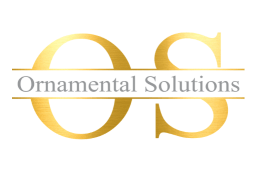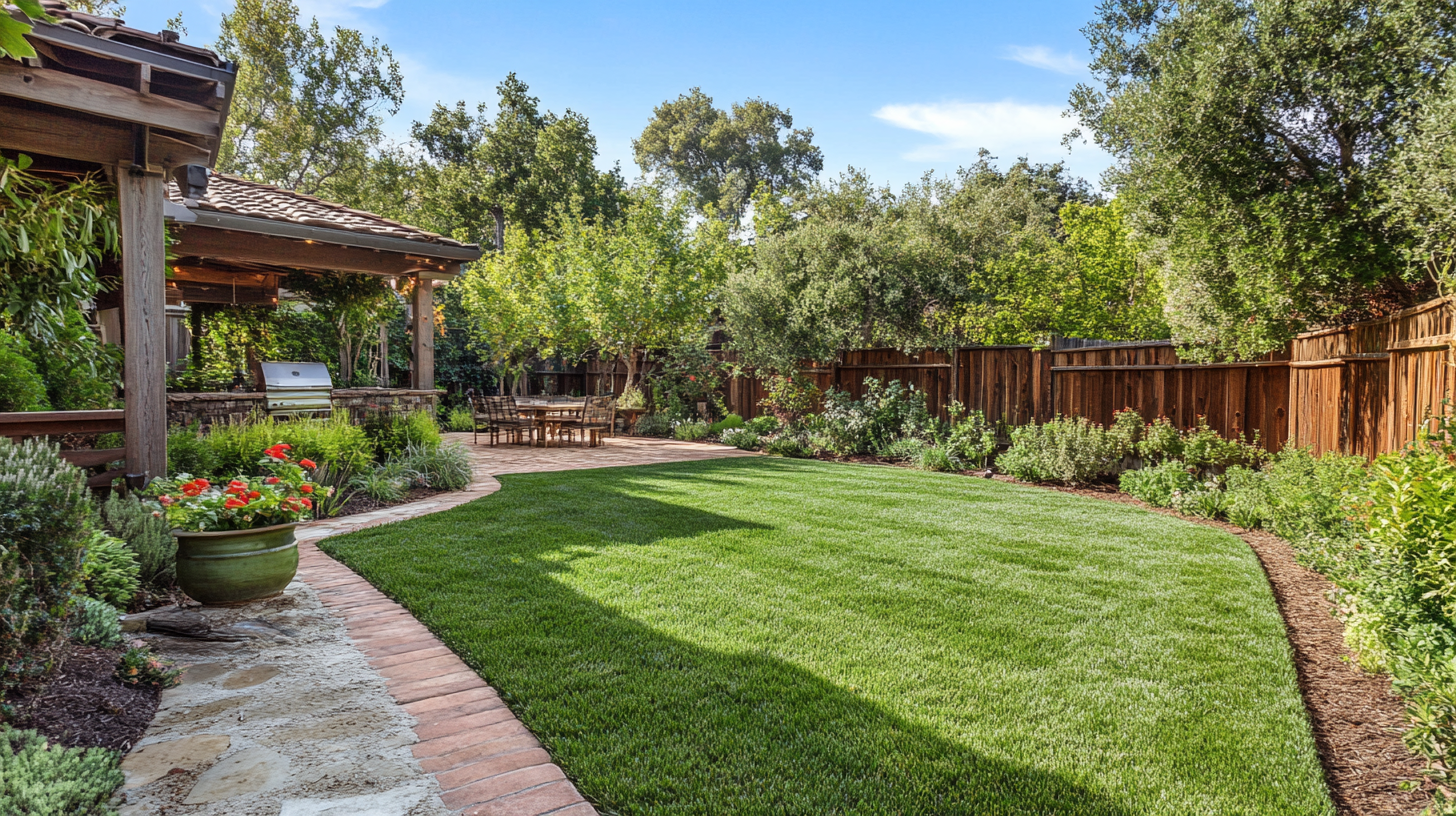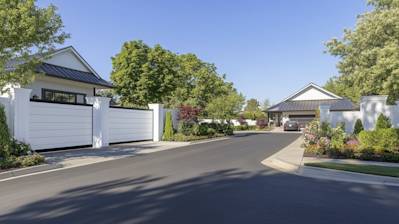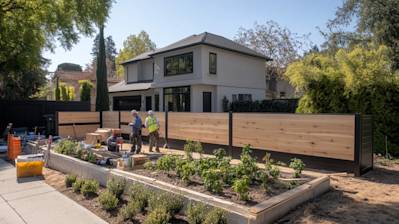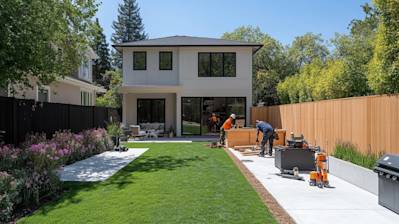Fence boards, the primary components of a wooden fence, play a quintessential role in providing privacy, safety and adding an aesthetic value to your home. Choosing the right fence boards can greatly affect the functionality and appearance of your fence. This blog will walk you through all the essential aspects of fence boards - their types, benefits, costs, maintenance tips and much more.
Understanding What Fence Boards Are
Fence boards, commonly referred to as fencing panels or sections, are the main elements of a wooden fence that connect the fence posts. They come in various dimensions and styles and are fixed horizontally or vertically, depending on the design of the fence. The primary purpose of these boards is to provide security against intruders, prevent unauthorized access, enhance privacy and improve your home's curb appeal.
Different Types of Fence Boards
There is a vast array of fence board styles and materials you can choose from, depending on your needs and aesthetic preferences. The most popular types include:
Wooden Fence Boards
Wooden fence boards are a classic choice that blends well with most architectural styles. Woods like cedar, pine, spruce, redwood, and white oak are popular choices due to their durability and attractiveness.
Vinyl Fence Boards
Vinyl fence boards are renowned for their low-maintenance properties and long-lasting durability. Available in a plethora of colors and styles, they mimic the look of wood but without the susceptibility to rot or pests.
Composite Fence Boards
Composite fence boards are made from a mixture of plastic and wood fibers. They offer the strength of wood and the easy upkeep of plastic, making them a versatile choice for homeowners.
Evaluating the Cost of Fence Boards
The cost of fence boards can vary significantly, depending on the material type, quality, and style you opt for. For instance, wooden fence boards might be less expensive upfront, but might require substantial maintenance costs over time. On the other hand, vinyl or composite fence boards may cost more initially but prove to be cost-effective in the long run due to their minimal maintenance needs.
Installation of Fence Boards
The installation process of fence boards varies based on the type of board and the fence design. However, the basic steps include: setting the fence posts in place, installing the fence rails, attaching the fence boards to the rails, and applying a protective coat (if required). Though it's a feasible DIY project, hiring a professional can ensure a sturdy and well-placed fence.
Frequently Asked Questions about Fence Boards
Can fence boards be used for other types of fencings?
Absolutely! While many homeowners use fence boards for privacy fencing, these panels can also be used for picket or split-rail fences.
The style and type of your fencing will largely depend on what you want from your fence - whether you need privacy, additional security, or simply ornamental appeal. You can use fence boards in customizing your fence to meet your specific requirements.
What types of wood are best for fence boards?
The choice of wood for fence boards depends on factors like climate, soil type, desired aesthetic, and budget.
Pressure-treated pine and cedar are popular choices due to their resistance to rot and insects. Pine is typically cheaper, however, while cedar tends to last longer due to its natural oils that resist weather damage.
Hardwoods like teak or ipe may be more expensive but offer durability and a different aesthetic. In contrast, softer woods like spruce or fir can be a more budget-friendly choice for people living in less harsh climates.
How do I install fence boards?
Installing fence boards starts with preparing the ground and setting your fence posts. Once the posts are properly set and allowed to dry if concrete is used, you can begin attaching your fence boards.
Use a level to make sure each board is straight slat on the fence and nail or screw the fence boards onto the supporting rails. Be careful to space the boards evenly for a visually pleasing and solid fence.
For detailed and accurate installation, it's a good idea to follow manufacturer’s instructions or seek professional help, especially if you're new to such projects.
How do I maintain my fence boards?
Regular maintenance ensures that your fence boards last longer and continue to look good.
For wooden fence boards, annual cleaning with a power washer or soft brush and mild detergent can help remove dirt and mildew. After cleaning, let the fence dry thoroughly.
Wooden fences can also benefit from a sealant or stain to battle weathering. This should be done every few years, depending on the climate and the specific sealant used.
If you notice any rotting or damage, replace the affected fence boards promptly to prevent the damage from spreading.
Can fence boards be painted or stained?
Definitely! Painting or staining your fence boards can give your fence a custom look that matches your home or garden. Apart from aesthetic benefits, painting or staining can also provide an additional layer of protection against the elements.
Before painting or staining, smooth the fence boards with sandpaper to ensure good adhesion. After applying the paint or stain, let it dry thoroughly before applying a second coat if necessary.
Where can I buy fence boards?
Fence boards can be purchased at local home improvement stores, lumber yards, or online retailers.
The choice between these options depends on factors like delivery options, price, and personal preference. Always remember to check the quality of the boards before buying - they should be free from visible damage, decay, or infestation.
Pros and Cons of Fence Boards
Fence boards can offer different advantages and disadvantages based on the type and material of the boards. Whether it is pressure-treated wood, cedar, vinyl, or composite materials, all have their specific pros and cons which need thorough understanding before deciding upon the type of fence boards for your yard.
Pros of Fence Boards
There exist several advantages with respect to fence boards which greatly add to their popularity as a top choice for outdoor or boundary fencing.
Longevity and Durability
Most fence board materials are designed to last.
- Pressure-treated fence boards, for example, can withstand harsh weather conditions and resist rotting and insect damage because of the chemicals it has been treated with.
- Vinyl fence boards, on the other hand, are not vulnerable to insects and woodborne diseases unlike the wood fences.
- Composite fence boards combine the best characteristics of both wood and vinyl, offering both strength and the desirable appearance of wood.
Aesthetics
The detail and character that fence boards can provide are often the reason why people choose them over other fencing options.
- Authenticity of wood fence boards: The distinctive, natural appearance of wood–like cedar fence boards–can add a rustic charm, so the demand for them remains high despite the maintenance they require.
- Customization: Fence boards, especially wood and vinyl, are available in a multitude of colors and styles, allowing for customization based on personal taste and the architectural style of the living space.
Ease of Installation
Fence boards are often preferred because of their ease of installation.
- Individual fence boards are relatively lightweight and manageable, making them a good choice for DIY (do-it-yourself) projects.
- Prefabricated fence panel sections can also be purchased for an even quicker and easier installation.
Cons of Fence Boards
Despite the numerous benefits, there are certain downsides to fence boards as well that potential consumers should be aware of.
Maintenance
While some materials are low maintenance, fence boards often require regular maintenance to keep them in good condition.
- Wood fence boards: They can warp, rot, and are likely to experience damage from insects or moisture. So, they often require weatherproofing treatments, staining, or painting.
- Vinyl fence boards: Despite being low maintenance, they can develop mildew or grime buildup that detracts from their appearance, requiring a periodic cleaning.
Price
The initial cost of installing fence boards can be high.
- High-quality wood, vinyl, and composite fence boards all come with a higher price tag.
- The cost of regular maintenance and repair for some materials also adds to the overall expenses.
Environmental Impact
Some materials used in fence boards can have a negative environmental impact.
- Pressure-treated wood: It's treated with chemicals that can be harmful to the environment.
- Vinyl: Although it's durable and recyclable, the manufacturing process for vinyl fence boards is not considered environmentally friendly.
Limited Lifespan
Even with proper care and maintenance, fence boards may eventually start to degrade and will need to be replaced.
- Wood fence boards have the shortest lifespan, as they are more vulnerable to environmental wear and tear.
- Vinyl and composite boards tend to have a longer lifespan but still, they are bound to fade or become damaged over time.
In conclusion, when deciding on the right fence boards for your yard, considerations need to be made with regards to their price, maintenance needs, aesthetic appeal, and potential environmental impact among other factors. This will help ensure that you choose a fencing option that best suits your personal preferences as well as the innate property constraints.
Summary
So, we've touched on the versatility and value that fence boards bring to the table. They're not just a barrier that shields your property from prying eyes and potential intruders. These workhorses can be used in a variety of DIY tasks around the house too, from creating shelves, picture frames to even furniture, letting your creative juices flow. Don’t let those leftover fence boards go to waste; instead, use them to add a dash of rustic charm to your home interior.
Fence boards are the backbone of a solid and sturdy fence to ensure the safety of your family and property. They provide the much-needed privacy while enhancing the aesthetic appeal of your outdoor space. With careful selection, installation, and maintenance, fence boards can serve you for many years, providing excellent value for your investment.
Also, it's worth noting that fence boards are a wonderful example of functional craftsmanship at its finest. Whether it's cedar, redwood, or pressure-treated pine, every type of board has its unique attributes. So, as you choose your fence boards, remember to consider not just their aesthetic appeal, but also their durability and suitability for your local climate and specific needs. Make your choice wisely, and you'll have a fence that's just as tough as it is beautiful.
